INTRODUCTION
The very word ‘Destroyer’ conveys destructive power, force, and strength. It is no surprise, therefore, when in naval terms, a destroyer is an extremely powerful warship which is meant to project power, perform complex missions and bring the enemy to their knees with its firepower. However, the destroyer didn’t start out as such. It was initially a small, fast, and manoeuverable fleet escort ship termed as a torpedo boat destroyer, whose only role was to find and sink enemy torpedo boats.
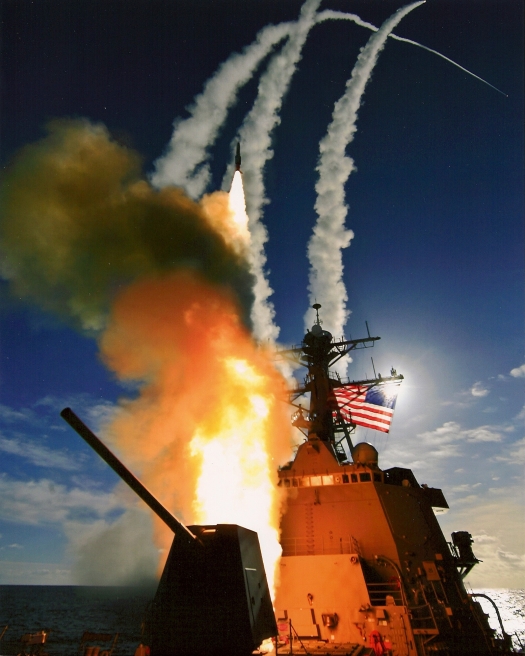
The first torpedo boat destroyers were developed in the last decade of the 19th century and gained prominence after World War I. Then they progressively grew in size to become significantly capable surface combatants by World War II. After this period, the invention of the naval surface to air and cruise missiles completely changed the look, size, and capabilities of a destroyer. The look of a warship bristling with dozens of guns was replaced by sleek lines and missiles stored under the deck. Though destroyers of now look less fearsome when compared to their WW2 counterparts, they carry several times the firepower and cutting edge sensors which allow 1 modern destroyer to do the job of around 10 legacy ones.
The below pictures highlight the evolution of destroyers with a gap of approximately 50 years between each.
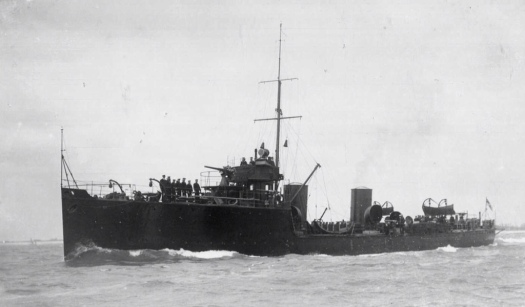

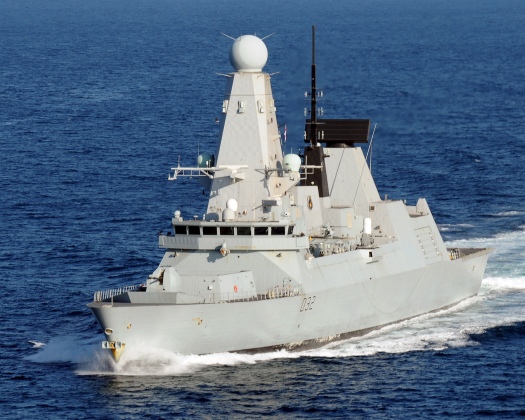
Defencyclopedia defines a destroyer as “A modern destroyer is a 6000-12,000 ton warship, equipped with an array of long-range missiles, guns, and high power radars, and is designed to operate autonomously or along with a battle group in order to fulfill a variety of tasks which typically consist of land attack, missile defense, and surface warfare”
Not every modern navy can afford to operate destroyers because of technological, budget, manpower, and location constraints. All the countries mentioned in this article have built their destroyers locally with either indigenously sourced or imported technology and designs. It is very rare for a country to export a destroyer these days as the market is limited to powerful countries which build their own destroyers anyways.
In this analysis, those destroyers which have well-balanced anti-submarine/air and surface capabilities are quoted as fully multi-role, whereas the ones with a specific role are quoted in their area of strength. The ranking is done on the basis of overall performance of the warship, including advanced technology, multirole capabilities, and aviation facilities. These rankings can vary when specialized capabilities are taken into. Hence, this article should not be quoted out of context. The article is intended to give an overview of the top 10 destroyers in service today, their capabilities and their drawbacks.
Special thanks to my friend D-Mitch of ![]() for creating some of the excellent infographics.
for creating some of the excellent infographics.
10. Akizuki class [Japan] 
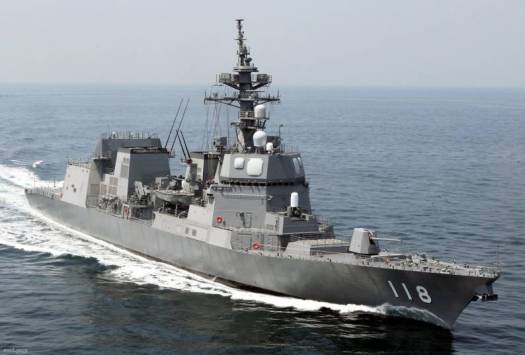
This is the newest class of destroyers in the Japanese Maritime Self-Defense Force (JMSDF). Built with a high level of indigenous technology, they complement the larger and more capable Atago and Kongo class AEGIS destroyers in service. Their main role is to serve as armed escorts for the JMSDF helicopter carriers. At 6800 tons, they are basically in the same league as a modern European frigate, but Japan classifies them as a destroyer due to its comprehensive weapons and sensor suite. As of now, there are 4 ships of this class, with the final one commissioned in 2014.
Strength: Fully Multi-role
Propulsion: Combined Gas and Gas (COGAG) propulsion with 4 Rolls Royce Spey SM1C gas turbines, providing 19.5 MW of power each for a total of 78 MW.
Sensors:
- OPS-50 dual band multimode radar with 4 C-band and X-band faces each.
- The C-band AESA radars are used primarily for long range search and tracking
- The X-band AESA is primarily for fire control and provides target illumination for the ESSM in the terminal intercept phase.
- A hull-mounted sonar
- OQR-3 towed array sonar
- An OPS-20C surface search radar.
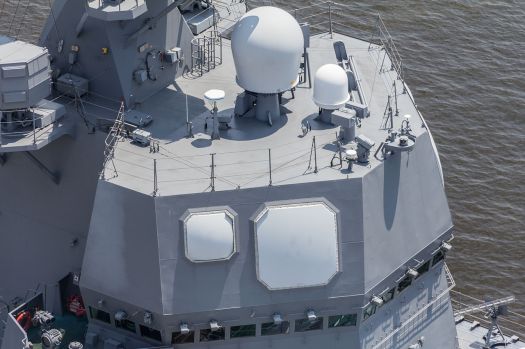
Armament:
- 32 cell Mk41 Vertical Launch System (VLS) cells for a mixture of Evolved Sea Sparrow Missile (ESSM), RUM-139 ASROC (Anti-submarine rocket) and Type 7 VL ASROC.
- The ESSM integration with its 50 km range, limits the warship to a defensive AAW role and prevents it from being used in offensive roles.
- 2 x 20 mm Phalanx Block 1B Close-in Weapons Systems provide a last-ditch defense against incoming cruise missiles
- 1 x 127 mm (5 in) Mk45 main gun which can fire at 16-20 rds/min up to a range of 24 km.
- 8 x Type 90 Anti-ship missiles with their 150 km range and 225 kg warhead provide a decent surface warfare capability.
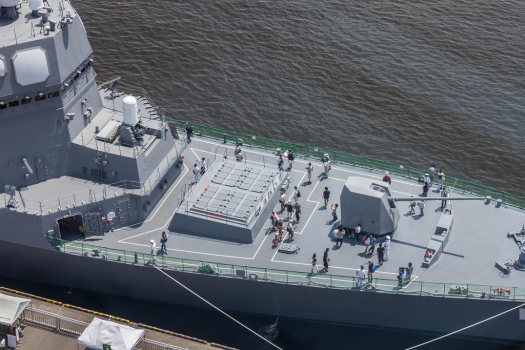
Cons:
- No long range air defense capability
- No land attack capability
Aviation: Full hangar facilities to support 2 x SH-60K helicopters for ASW roles.
9. Type-52C/Luyang II class [China] 

Often dismissed as a Chinese knockoff of the American AEGIS destroyers, the Type-52C is completely unique and has no similarities with its American counterpart. These 7000-ton ships were built to test several new technologies like electronically scanning radars, long-range SAM system, land attack capability, indigenous closed loop CIWS and a new hull design. These features make the Type 52C a formidable opponent and laid the pathway for the future Type 52D destroyers with many more refinements and upgrades. This ship class basically heralded the entry into the era 21st-century technological warfare for the PLAN.
Strength: Anti-Air/Surface Warfare
Propulsion:
- Combined Diesel Or Gas (CODOG) propulsion using only diesel engines for a low-speed cruise and using only gas turbines for high-speed cruise.
- 2 x Ukrainian DN80 gas turbines rated at 24 MW each for a total of 48 MW during high-speed cruise
- 2 x Shaanxi diesel engines rated at 5 MW each for a total of 10 MW during a low-speed cruise.
Sensors:
- Type 346 dual-band Active Electronically Scanning Array (AESA) Radar with 4 faces mounted on the superstructure. It operates in C and S bands and its primary functions are search, track, and missile guidance
- Type 517 VHF air search radar with an instrumented range of 300 km
- Type 344 fire control radar for the 100 mm main gun
- Hull mounted and variable depth active/passive sonar

Armament:
- 1 x 100 mm Type 210 main gun, with a rate of fire of 90 rds/min and a range of 15-20 km.
- 48 x Vertical Launch System cells for HQ-9 long-range SAM system with cold launch technology (missile is ejected from the cell using compressed air, prior to ignition of the rocket motor). It has a range of 200 km and an active radar seeker which allows engagement of targets at very long ranges beyond the radar horizon of the ship.
- 16 x slant launchers for 16 YJ-62 anti-ship/land attack cruise missiles with 400 km range and a 210 kg warhead.
- 2 x 30 mm Type 730 Close-in Weapons Systems with a rate of fire of 5800 rds/min and an effective range of 3 km for last ditch defense against cruise missiles.
- 2 x triple 324 mm torpedo tubes for lightweight torpedoes.
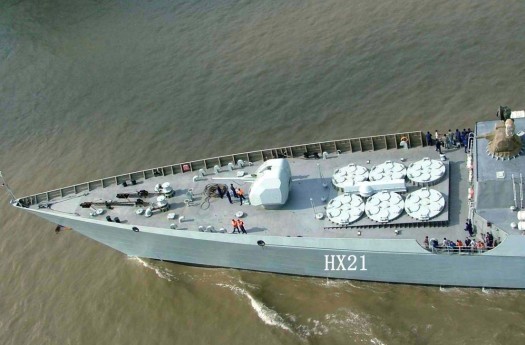

Cons:
- Lacks a secondary SAM layer which can engage targets at close ranges. Being a primarily AAW destroyer, it is essential to have this capability.
- Absence of a towed array sonar due to hull design and budget limitations
Aviation: Hangar for 1 x Ka-28 or Z-9 ASW helicopter.
8. Type-45 Daring class [Britain] 
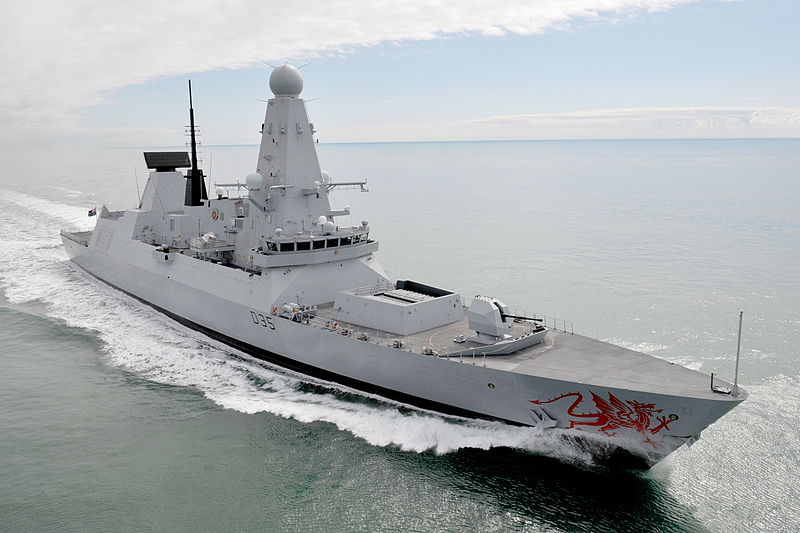
Developed as a replacement for the Type 42, the Type 45 program was initially conceived as a 1 for 1 replacement for the 12 Type 42 destroyers. In the end, only 6 ships were built due to budget cuts and other issues and they serve as the sole destroyer class. These ships have cutting edge weapons and sensors as well as a high degree of automation, which reduces the crew requirement. Though at 8000 tons, these ships could have been made into multirole platforms, the Royal Navy chooses to give them only anti-air capabilities.
Its anti-surface capabilities will be negligible after the retirement of the Harpoon in 2018. The Sylver VLS farm in the front reportedly has space for the addition of 12 more A50 vertical launch cells for SAMs or A70 cells for the Scalp cruise missile. It will be interesting to see if the budget cuts allow the RN to deploy land attack cruise missiles on their primary air defense warship. It is interesting to note that this is the only single-role warship on this list.
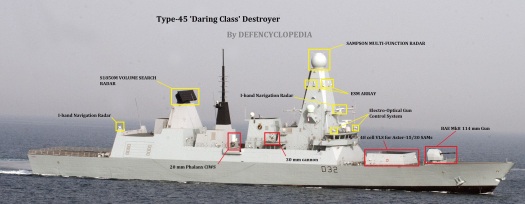
Strength: Anti-Air Warfare
Propulsion: The Type-45s have a very advanced Integrated Electric Propulsion (IEP) system. It consists of diesel-electric propulsion combined with gas turbine propulsion to achieve maximum power and efficiency. The engines generate electricity, which runs the motors, which in turn turns the propellers.
- 2 × Rolls-Royce WR-21 gas turbines, each generating 21,500 kW
- 2 × diesel generators of 2 MW each, generate electricity to power 2 × electric motors.
- Total output: 45,000 kW. This gives the ships a range of over 13,000 km at a speed of 18 knots.
Sensors:
- Sampson multi-function Active Electronically Scanning Array (AESA) two-faced rotating radar, enclosed in a spherical radome, with a range of 300+ km. It provides guidance to the main gun and targeting data for the missiles.
- Thales S1850M PESA long-range search radar operating in the L-Band. It has a range of 400+ km and is used to provide early warning against aerial threats and track ballistic missiles.
- MFS-7000 bow mounted sonar

Armament:
- 48 x cell vertical launch system for a mix of 48 Aster-15 (50+ km range) and Aster-30 (120+ km range)
- 8 x inclined tube launchers for Harpoon anti-ship missiles (*poof*, gone after 2018)
- 1 x BAE Mk8 114 mm gun which is used for engaging surface targets and also for shore bombardment during amphibious landings.
- 2 x 30 mm Bushmaster cannons which are mainly used to engage small craft.

Cons:
- Issues with the Rolls-Royce gas turbines while operating in warm waters has reduced the availability and operational readiness of this class. This is being corrected with an expensive and lengthy refit.
- Highly vulnerable to submarine attacks due to lack of integral torpedo tubes and towed array sonar. This makes it heavily dependent on its embarked helo and escort frigates for ASW protection.
Aviation: Hangar facilities for 1 x heavy Merlin helicopter or 2 x light Lynx helicopters.

7. Horizon/Orizzonte class [France/Italy]  /
/ 
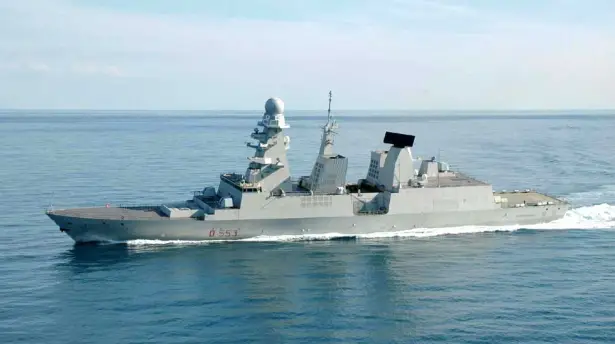
Having its origins as a pan-European program consisting of the UK, France, and Italy, the Horizon common frigate program originally called for 22 air-defense ships to be built, with 12 for the Royal Navy, 4 for the French Navy and 6 for the Italian Navy. But things were just not destined to be this way, with the UK withdrawing from the project due to disagreements regarding which company would lead the project, cost, technical issues and the number of ships for the French and the Italian navies being reduced to just 2 each.
However, France and Italy went ahead with the project by incorporating similar core weapons and sensors, resulting in the Horizon class ships we have today. Unlike the British solo-venture Daring class, which is capable of only anti-air warfare, the 7000-ton Horizons are multirole ships and can handle all sorts of threats including sub-surface ones. At present, they serve primarily in the anti-air role and are used as escorts for their carriers.
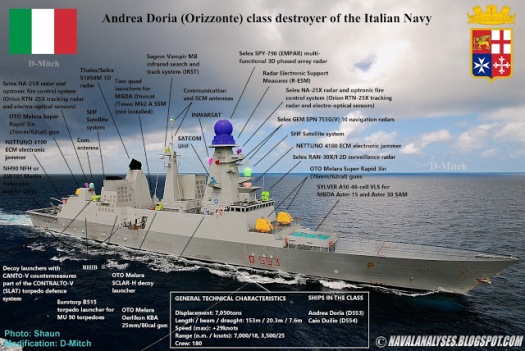
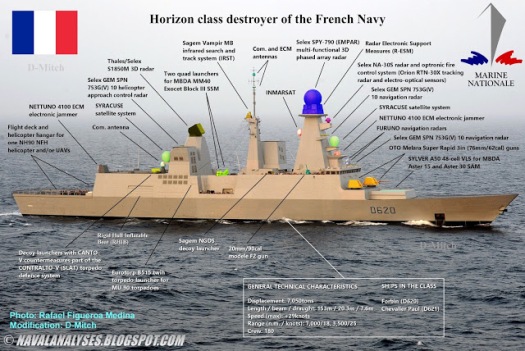
Strength: Anti-Air Warfare
Propulsion: Combined Diesel Or Gas (COGAG) propulsion with 2 x LM2500 gas turbines generating 20.5 MW each and 2 x Pielstick diesel engines generating 4.7 MW each for a total of 50.4 MW.
Sensors:
- 1 x EMPAR (European Multifunction Phased Array Radar)single faced Passive electronically scanning array radar operating in C-band for surface/air search, target tracking, and missile guidance.
- 1 x S1850M L-band volume search PESA radar for detection of aerial targets at long ranges and early warning.
- Bow mounted UMS 4110 sonar
- Selex RAN 30X/I surface search radar in E/F band [Italy]
- Sagem IRST (Infrared Search and Track) Vampir MB for detection of asymmetric threats and passive tracking of missiles and aircraft at short ranges.
Armament:
- 48 x cell vertical launch system for a mix of 48 Aster-15 (50+ km range) and Aster-30 (120+ km range)
- 8 x inclined tube launchers for Exocet anti-ship missiles [France] / 8 x inclined tube launchers for Otomat anti-ship missiles [Italy]
- 2 × OTO Melara 76 mm Super Rapid guns [France] / 3 × guns [Italy]
- 1× Sadral CIWS with 6 Mistral point defense surface to air missiles [France]
- 2× OTO Melara 25 mm guns [Italy]
- 2× 20 mm modèle F2 guns [France]
- 2× single torpedo tubes for MU90 Impact lightweight torpedoes (24 reloads available)
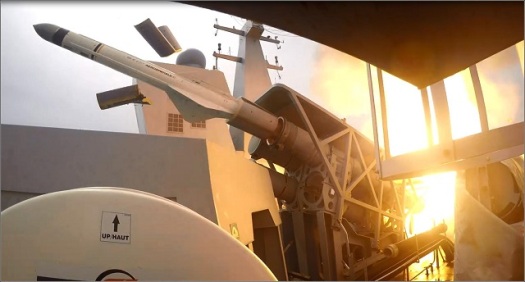
Cons:
- Primary radar is a Passive Electronically Scanning Array, which is inferior to the Active ESA in the Daring class. This will be rectified in the future with the installation of the MFRA (Multi Functional Radar Active) AESA radar.
Aviation: Hangar facilities for 1 x multirole helicopter. Usually, NH90 is embarked.
You can check out an excellent and detailed analysis of these ships by Naval Analyses here
6. Kolkata class [India] 
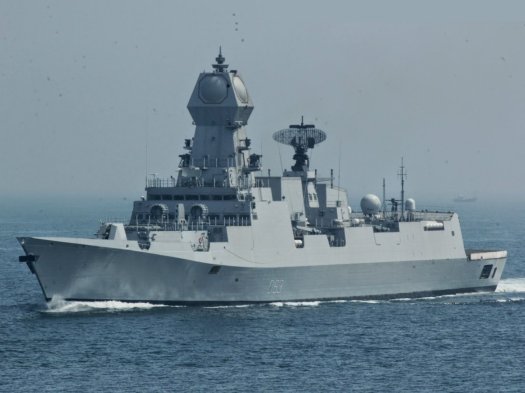
Developed under Project-15A, the Kolkata class are the largest indigenously designed and built surface combatants in India. They are equipped with a wide variety of equipment from countries like Italy (main gun), Ukraine (gas turbines), Israel (Jointly developed LR-SAM) and Russia (Jointly developed BrahMos), which gives it the advantage of having cutting edge technology from the east and the west, infused into an Indian platform.
Displacing 7500 tons, the Kolkata class is the most powerful warship class in the Indian fleet, and will soon be joined by 4 ships of the Vishakapatnam class, which will have a similar configuration and capabilities with minor improvements. All 3 ships of the Kolkata class will be deployed with the Indian Navy’s Western fleet and will also serve as an escort for their carrier, INS Vikramaditya. These ships are built with plenty of room for additional upgrades and improvements in the future and have a large crew due to the presence of full-scale command and control facilities which enable it to act as the fleet flagship in the absence of a carrier.
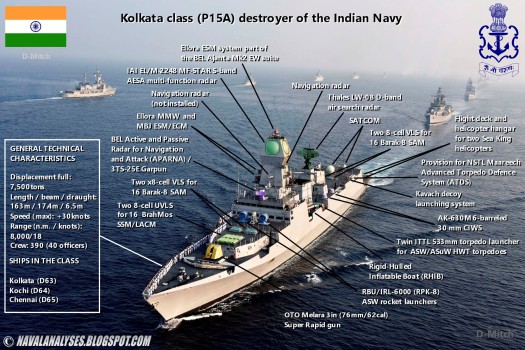
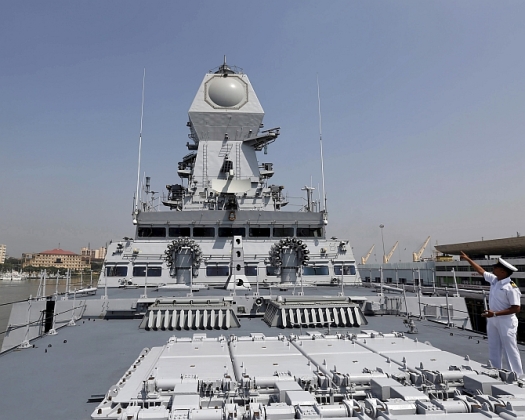
Strength: Fully Multi-role
Propulsion:
- Combined Gas And Gas (COGAG) propulsion with 4 x Zorya DT-59 gas turbines.
- 2 × KVM-diesel engines generating 7,400 kW each
Sensors:
- MF-STAR multi-function radar operating in the S-band. It has a range of 250+ km and is used for surface/air search, tracking, missile guidance and gunnery.
- Its secondary radar is a Thales LW-08 2D radar which operates in the L-Band. It’s a long-range surveillance radar and provides target indication to weapon control systems.
- 1 x Aparna surface search and missile guidance radar for anti-ship missile targeting.
- 1 x Optronic/Infrared sensor ball mounted on the hangar (It provides 300° coverage) to control the Ak-630 CIWS in passive mode.
- Bow mounted HUMSA-NG sonar
- Atlas Elektronik towed array sonar

Armament:
- 2 x 8 cell Universal Vertical Launching System (UVLS) for 16 BrahMos anti-ship/land attack supersonic cruise missiles. They have a range of 600 km and a 290 kg warhead.
- 4 x 8 cell VLS for 32 Barak-8 MR-SAM with a range of 90+ km
- 1 x 76 mm Oto Melara super rapid gun mount
- 4 x Ak630 30 mm Gatling guns for anti-missile/aircraft defense at short range
- 2 x RBU-6000 (Modified version called Indigenous Rocket Launcher) for launching anti-submarine rockets with a range of 4.5 km.
- 2 x twin 533 mm heavyweight torpedo tubes for 4 torpedoes

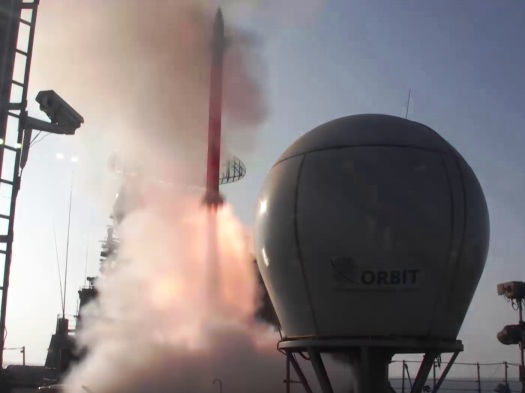
Cons:
- The LW08 L-band volume search radar is outdated for such a modern warship. It needs to be replaced with a modern AESA like the ones on the Type-45
Aviation: Hangar facilities for 2 x multirole helicopters. Seaking at present and Seahawk in the future.
5. Hobart class [Australia] 

The Royal Australian Navy is inching towards acquiring the coveted ‘Blue Water Navy’ status and the 6900-ton Hobart-class is just one type of asset that it is acquiring among others like 2 Canberra class LHDs (which can be used as mini-carriers with F-35B), 12 heavy diesel submarines and a fleet of next generation frigates. The Hobarts allow the RAN to provide a 600 km diameter protective umbrella while acting as a fleet escort, thereby bringing them up to the level of other top navies which have fielded similar air defense capabilities for some time now.
It is estimated that 3 Hobarts equipped with SM-6 missiles would be able to provide adequate air defense against threats encountered along their northern coast. This is a massive increase in capability, thanks to the advanced long-range radars and missiles on board. Though they have been marketed as AWD (Air Warfare Destroyers), they have some significant anti-surface and anti-submarine capabilities

Strength: Anti-Air Warfare
Propulsion: Combined Diesel or Gas (CODOG) propulsion with 2 x GE LM2500 gas turbines generating 17.5 MW each and 2 Caterpillar Bravo diesel engines generating 5.7 MW each for a total of 46.4 MW of power.

Sensors:
- SPY-1D Passive Electronically Scanning Array (PESA) radar with 4 panels, operating in the S-band for air/surface search and target tracking. It has a range of 350+ km.
- AN/SPQ-9B X-band radar for enhanced detection of low flying threats
- Integrated Sonar System
- Series 2500 electro-optical director
- Sagem VAMPIR IR search and track system for passive detection of cruise missiles, aircraft, and other asymmetric threats
- Rafael Toplite stabilized target acquisition sights for 25 mm guns
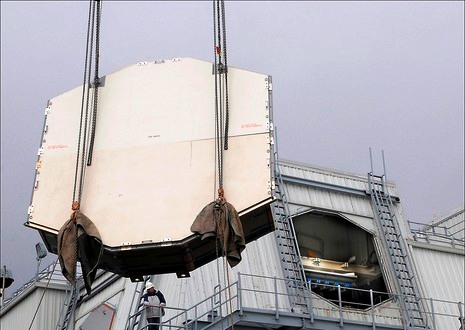
Armament:
- 48 x cell Mk 41 VLS for a mix of
- SM-2 (150+ km range)
- ESSM (50 km range), 4 missiles per cell
- SM-6 (350 km range) surface to air missiles
- 8 x Harpoon anti-ship missiles
- 1 x 127 mm Mk45 main gun
- 2 x 25 mm Bushmaster cannons in Typhoon remote mounts
- 1 x Phalanx 20 mm close-in weapons system (CIWS)
- 2 x Mk32 twin torpedo tubes for MU-90 lightweight torpedoes
Cons:
- Lack of a long-range land attack missile
Aviation: 1 x hangar for a single MH-60R helicopter
4. Type-52D / Luyang III-class / Kunming class [China] 

The successor of the highly capable Type-52C destroyers, the 52D incorporates several significant improvements from guns, radars to missile launchers. These 7500-ton destroyers are being mass produced and are expected to form the core of the PLAN’s blue-water ambitions. The highlight of the ship is its Universal Vertical Launch System, which allows a single launcher to fire a variety of missiles ranging from surface to air, anti-submarine, anti-ship and land attack cruise missiles.
This technology, which was pioneered by the US, has now been perfected by the Chinese as well, making them the second country to do so (The VLS systems like UKSK and Sylver are not truly universal). These ships are expected to be further improved upon and the result is expected to be the all-powerful Type 55 destroyer. Recently, the 12th destroyer was launched and 1 of these destroyers has already been deployed as part of the Liaoning carrier battle group.
Strength: Fully Multi-role
Propulsion: Combined Diesel Or Gas (CODOG) propulsion with 2 x QC280 gas turbines generating 28 MW each and 2 x MTU diesel engines generating 6 MW each for a total of 68 MW.
Sensors:

- 4-face S-band AESA radar mounted on superstructure for long range search, tracking and surface to air missile guidance.
- Type 517 Very High Frequency (VHF) long-range radar for early warning.
- Type 366 radar for anti-ship missile guidance
- Active/passive bow mounted sonar
- Towed array sonar
Armament:
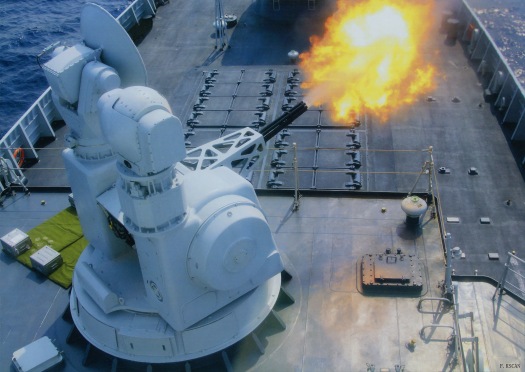
- 1 x 130 mm main gun
- 2 x 30 mm guns
- 1 x Type 1130 11-barrelled 30 mm CIWS
- 1 x FL3000N short range SAM launcher with 24 missiles
- 2 x triple lightweight torpedo tubes
- 64 cell Universal Vertical Launch System for a mix of the following missiles
- YJ-18 anti-ship missile with 450+ km range, subsonic cruise and terminal supersonic speeds.
- CJ-10 land attack cruise missile with 1500+ km range and 500 kg warhead
- CY-5 ASW missile with a lightweight torpedo as warhead
- HQ-9 long range SAM with 200 km range
- HQ-16 medium range SAM
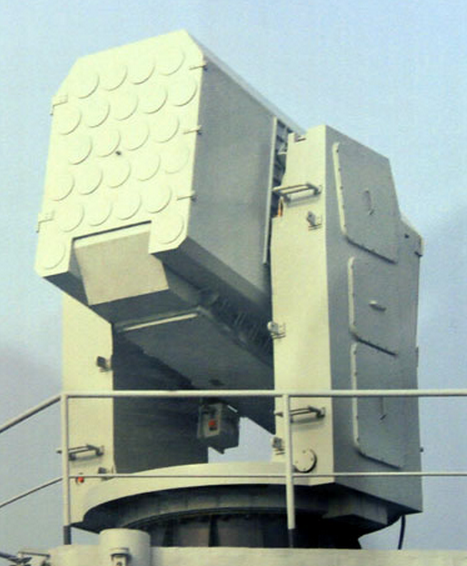
Cons: On paper, this ship doesn’t have any glaring drawbacks. Great job China.
Aviation: Hangar for 1 x Ka-28 or Z-9 ASW helicopter.
3. Atago class [Japan] 

The Atago class destroyers form the spearhead of the Japanese sea-based air defense with their advanced radars and long-range missiles. In the face of increasing missile threats from North Korea and Chinese adventurism near the disputed Senkaku islands, Japan is further committed to increasing the strength of their Atago class fleet from 2 ships to 4, with the new ships being equipped for exo-atmospheric ballistic missile defense. These 10,000-ton destroyers place a major emphasis on long range area air defense as the Japanese lack carrier based jets to do the job.
The Atagos are significantly larger than the Arleigh Burkes from which they derive their base design. There have been major changes to the ship however including superstructure design and VLS layouts, which easily distinguish it from the American Burkes. At present, the Atago class is more advanced and powerful than any Chinese warship, but it will soon be dethroned from this elevation by the arrival of the next generation Chinese missile cruisers. The Atagos noticeably lack long range offensive firepower which is in line with the defensive Japanese naval doctrine.
Strength: Fully Multi-role
Propulsion:
- Combined Gas and Gas (COGAG) propulsion with 4 x Ishikawajima Harima/General Electric LM2500-30 gas turbines which generate a total of 75,000 KW
Sensors:
- SPY-1D Passive Electronically Scanning Array (PESA) radar with 4 panels, operating in the S-band for air/surface search and target tracking. It has a range of 350+ km.
- 3 x SPG-62 illuminators to provide terminal target illumination for its semi-active radar homing SAMs.
- 1 x surface search radar
- 1 x bow mounted sonar
Armament:

- 96 x cell Mk 41 VLS ( 64 fore and 32 aft) for a mix of
- SM-2 (150+ km range)
- ESSM (50 km range) 4 missiles per cell
- SM-3 (exo-atmospheric anti-ballistic missile)
- ASROC anti-submarine missiles
- 8 x Type 90 anti-ship missiles
- 1 x 127 mm Mk45 main gun
- 2 x Phalanx 20 mm close-in weapons system (CIWS)
- 2 x Type 68 triple torpedo tubes for 324 mm lightweight torpedoes
Cons:
- No long range land attack capability. This feature is supported by the Mk41 VLS but the Japanese have chosen not to incorporate it.
- No secondary surveillance radar
Aviation: 1 x hangar for a single SH-60K helicopter
2. Arleigh Burke class [USA] 
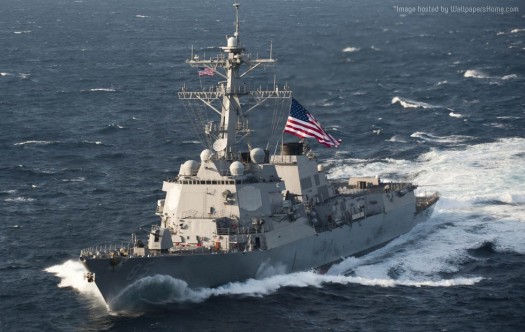
The Arleigh Burke class is the most successful destroyer class in the world, with 62 warships in service and 7 more under construction. The reduction in the number of Zumwalt-class destroyers to 3 from 32 is going to give a further boost to the Arleigh Burke class, as it is the only destroyer in mass production for now. The number of units is expected to swell to around 80 ships by 2025 with the induction of the improved Flight III ships.
Since their introduction in 1991, they have served in every theater of conflict for the US Navy and carried out escort missions, deterrence patrols, anti-piracy missions, ballistic missile defense duties, land attack, anti-air and HADR (humanitarian and disaster relief) missions, making it rich in terms of combat experience. These 9800-ton ships have powerful radars, a large missile armament, and continuous upgrades, which make them suited to handle any threat in any ocean in the world.
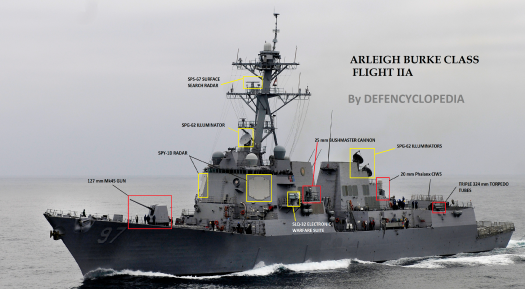
Strength: Fully Multi-role
Propulsion:
- COGAG propulsion with each ship powered by 4 x LM2500 gas turbines, each generating 19,800 kW.
- Total output: 79,000 kW. It has a range of around 10,000 km at a speed of 18 knots.

Sensors:
- SPY-1D Passive Electronically Scanning Array (PESA) radar with 4 panels, operating in the S-band for air/surface search and target tracking. It has a range of 350+ km.
- 3 x SPG-62 illuminators to provide terminal target illumination for its semi-active radar homing SAMs.
- 1 x SPS-67 surface search radar
- 1 x bow mounted sonar
- 1 x towed array sonar
Armament:
- 96 x cell Mk 41 VLS ( 32 fore and 64 aft) for a mix of
- SM-2 (150+ km range)
- ESSM (50 km range) 4 missiles per cell
- SM-3 (exo-atmospheric anti-ballistic missile)
- SM-6 (350 km range) surface to air missiles
- Tomahawk land attack cruise missiles (1500+ km range)
- ASROC anti-submarine missiles
- 8 x Harpoon anti-ship missiles
- 1 x 127 mm Mk45 main gun
- 2 x 25 mm Bushmaster cannons for asymmetric threats
- 1 x Phalanx 20 mm close-in weapons system (CIWS)
- 2 x triple torpedo tubes for 324 mm lightweight torpedoes
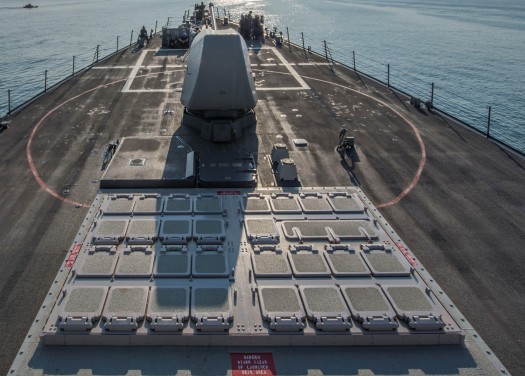
Cons:
- No secondary volume search radar. This allows the ship to perform either only ballistic missile defense (high elevation scan) or cruise missile defense (low elevation scan). This makes it vulnerable to sea-skimming cruise missiles while operating in ballistic missile defense mode. The Phalanx will be the only defense during that time as it has its own radar system. A solution has been implemented with the installation of the self-contained SeaRAM missile system in place of the less-effective Phalanx. This is currently under testing and will be retrofitted on most of the ships later on.
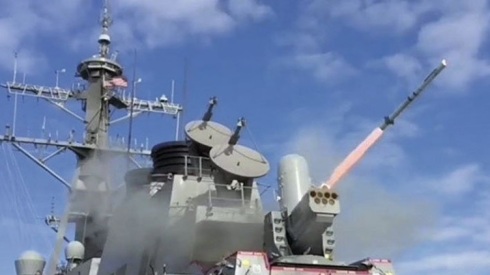
- Dependence on mechanical X-band illuminators for the SAMs, limit the numbers targets intercepted simultaneously. Japanese warships use AESA X-band illuminators which solve the problem.
- Note: The flight III ships will solve both these problems with the addition of a 4-faced X-band AESA in addition to the 4 faced S-band AESA.
Aviation: 2 x hangars for S-70B/MH60R Seahawk multirole helicopters
1. King Sejong the Great class [South Korea] 
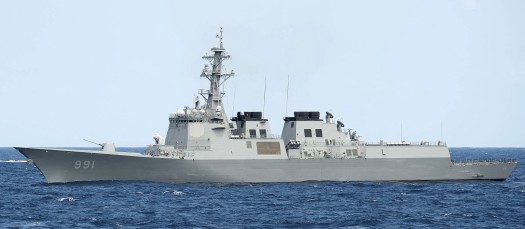
Surprise surprise! I know you didn’t expect South Korea to appear in the number 1 spot, but that is how it is. They have a massive shipbuilding industry, which can rival and outperform the ones in Europe and the US. These ships were built in a very short duration (around 2 years) and also possess the distinction of being the world’s largest destroyer, displacing a mammoth 11,000 tons when fully loaded. Based on the Arleigh Burke design, they have a comprehensive sensor and weapons suite which enables them to carry out basically any mission from cruise missile defense to attacking land targets 1500 km away to high-intensity anti-submarine warfare.
A single warship of this class can obliterate the entire North Korean surface, sub-surface fleet and pound targets deep within their territory without breaking a sweat. The powerful on-board radars are often used for tracking North Korean space and missile launches. 3 additional ships have been approved for construction to complement the existing 3 in service.
Strength: Fully Multi-role
Propulsion: COGAG arrangement with 4 x GE LM2500 gas turbines generating a total of 75 MW
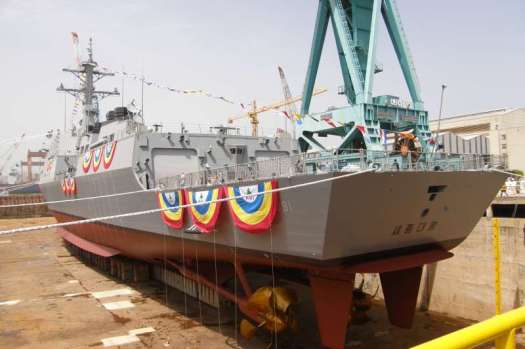
Sensors:
- SPY-1D Passive Electronically Scanning Array (PESA) radar with 4 panels, operating in the S-band for air/surface search and target tracking. It has a range of 350+ km.
- 3 x SPG-62 fire control radar for providing terminal illumination for the SAMs
- Sagem Infrared Search & Track (IRST) system for passive detection of cruise missiles, aircraft, and other asymmetric threats
- DSQS-21BZ hull mounted sonar
- Towed array sonar system
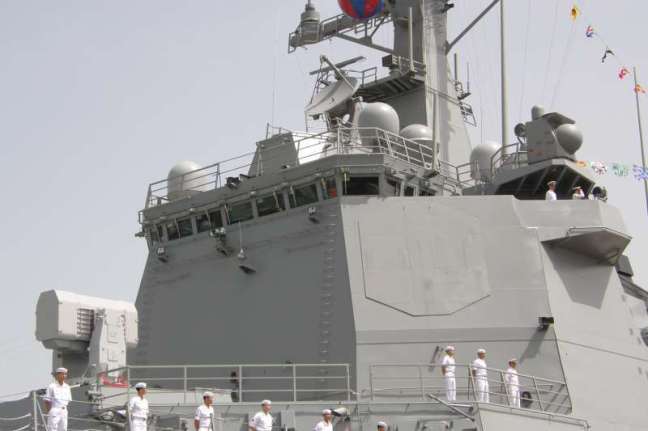
Armament:
- 1 x 127 mm Mk45 main gun
- 1 x 30 mm Goalkeeper CIWS
- 1 x RAM (Rolling Airframe Missile) CIWS with 21 missiles
- 80 cell Mk41 VLS for SM-2 Blk III surface to air missiles with 150+ km range
- 16 x SSM700K anti-ship missiles with 150+ km range
- 48 cell K-VLS cells for a mixture of 32 Hyunmoo III land attack cruise missiles with 1000+ km range and 16 Red Shark anti-submarine rockets
- 2 x triple launchers for Blue Shark lightweight torpedoes

Cons: No secondary volume search radar. This is not an operational necessity for the South Koreans since their ships are not intended for overseas combat, but for mainland defense, and thus can be complemented by land-based radars and AWACS.
Aviation: Hangar for 2 x SH-60 Seahawk or Lynx helicopters.
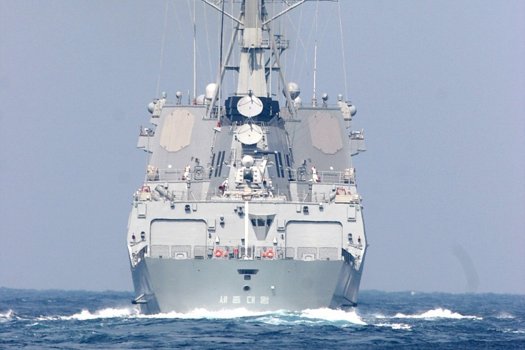
CONCLUSION
- If there is one conclusion we can come to, it is that the American AEGIS+SPY+Mk41 combination is the ideal choice for a multirole destroyer. It offers exceptional flexibility, upgradability, and scalability which will keep it relevant in the future as well.
- It is interesting to note that not a single Russian ship features in this particular list, owing to the fact that they haven’t designed and built a modern destroyer for over 30 years.
- This situation is unlikely to improve soon and the next class of Russian destroyers is expected only around the 2025-2030 period. Still, Russia maintains an indirect presence in this list as many of their weapons and subsystems have been incorporated on the Indian and Chinese destroyers in this list.
- Wondering why the 14,000 ton Zumwalt doesn’t feature in this list? That’s because they are guided missile cruisers and have the ‘destroyer’ classification wholly for political reasons. Also, they are ‘TABPUS’ – Technologically Advanced But Practically Useless Ships 😉
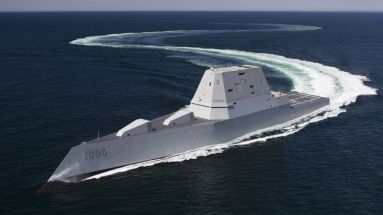
- The under-construction Chinese Type-55 ‘destroyers’ are also cruisers at 14,000+ tons and will not feature in a top 10 destroyer lost.

- Unfortunately, it is not possible to make a top 10 cruiser list as only the USA, China, and Russia operates them. However, I will try to cover these cruisers in separate articles in the future.
Congratulations! You just finished reading a 4588-word article!
Enjoyed reading the article? Do rate it below! Share your opinions with us in the comments.
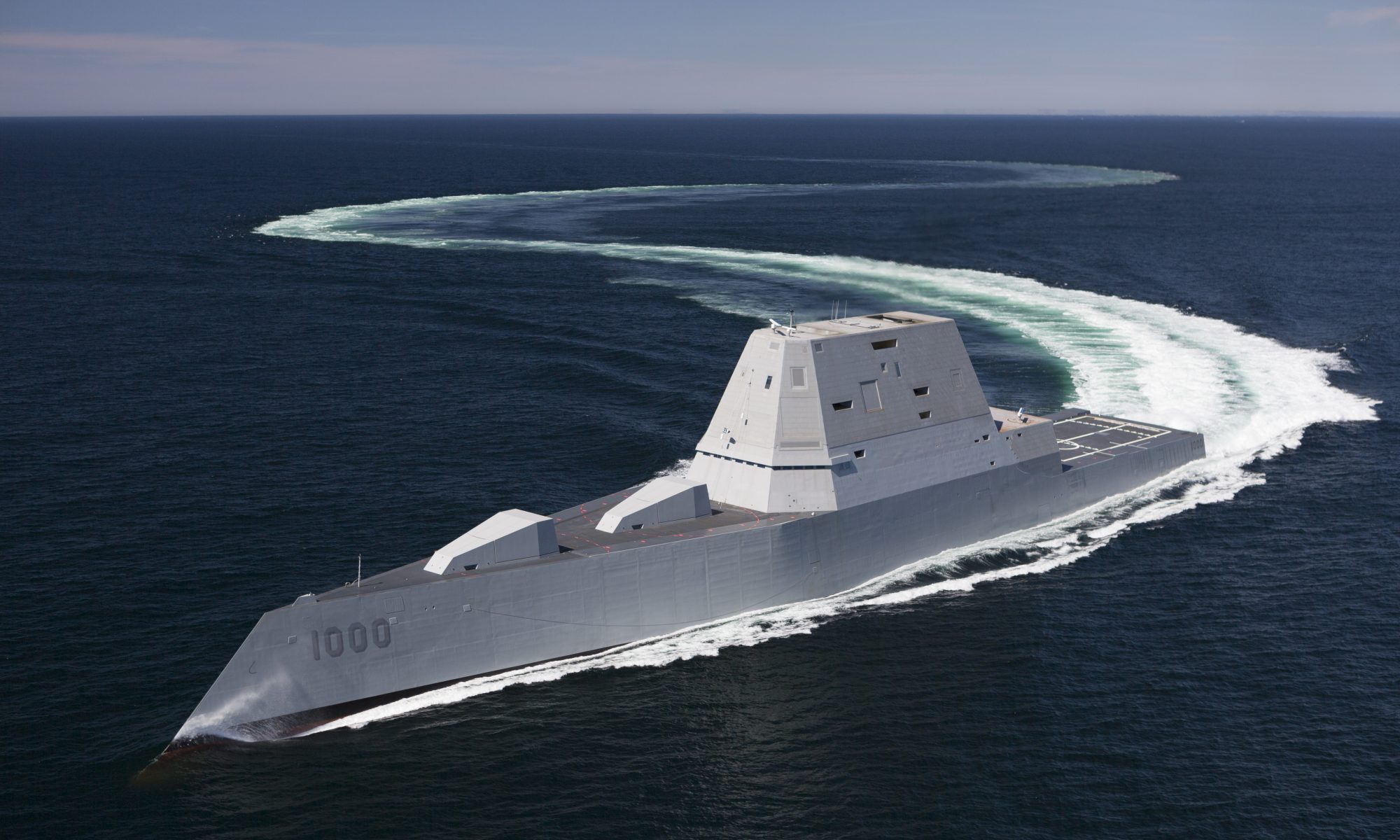
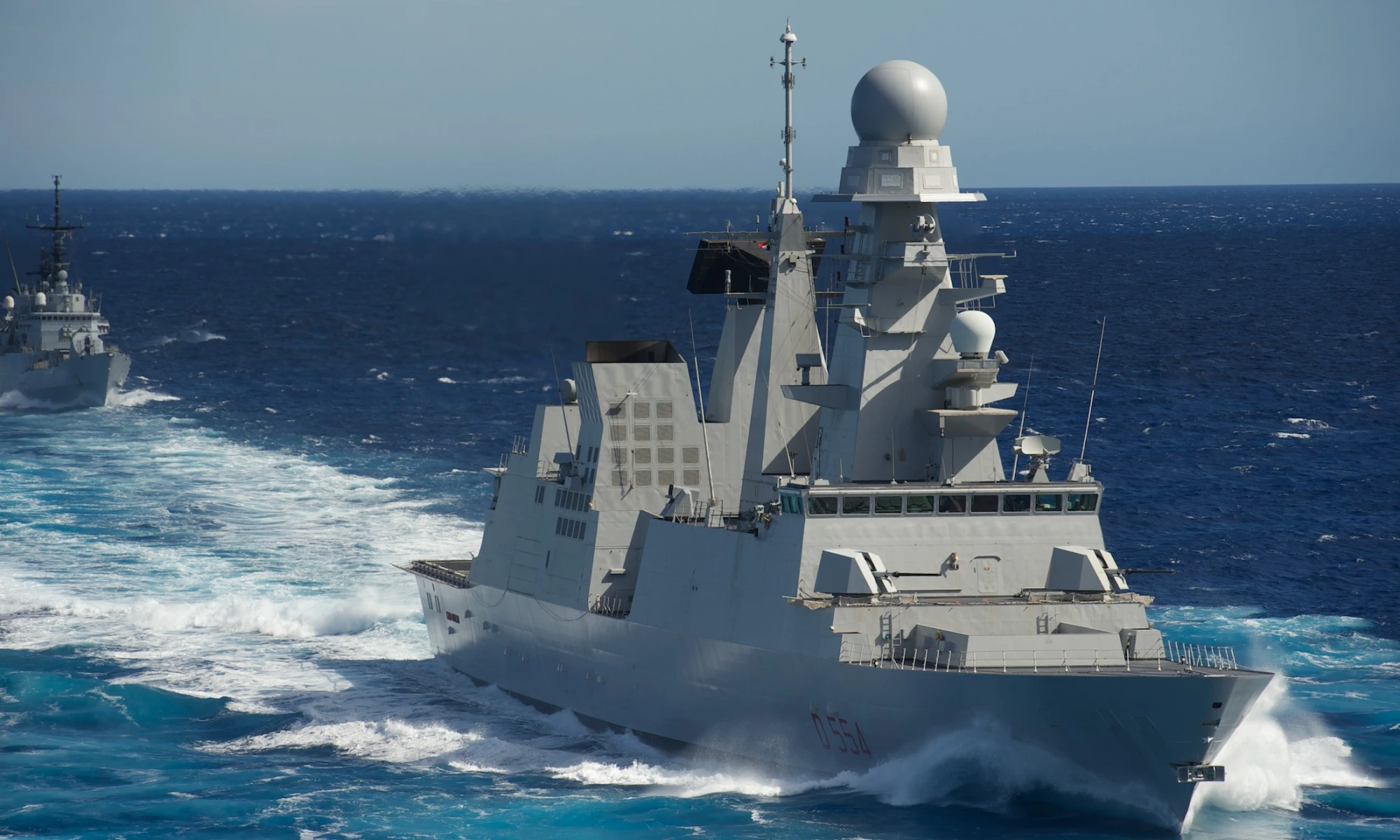


Great article, informative.
Also like the layout of the article.
LikeLike
Thank you
LikeLike
Wow what a detailed analysis.
LikeLiked by 1 person
Thanks
LikeLike
NRP is great
LikeLiked by 1 person
Thank you.
LikeLike
Superb article NRP. Loved reading your analysis. Keep ’em coming!
LikeLiked by 1 person
Thank you
LikeLike
Hi NRP
Great Article indeed…Keep up the good work
Here are my doubts regarding this :
1)The Top 2 Destroyers you have mentioned has only PESA not AESA , Isn’t it a Drawback,?!
2)Indian Kolkatta class does not have Point defence missile, isn’t it a bad thing,..,Also they have been succeeded in Indian service by Vishakapatam class, there is no mention of it..!!!
LikeLiked by 1 person
Thank you.
1. It is a minor drawback, but these ships make up for it with enormous firepower, multirole capabilities.
2. Lack of PDMS is not a major drawback. It could be installed in the future in place of 2 x Ak630.
Vishakapatnam class is exactly similar to the Kolkata class in performance, barring a few minor design changes. And it is not yet in service. Hence it is not mentioned.
LikeLike
Barak 8 can serve point defense, short & medium range role.
LikeLike
Outstanding information. in depth research and intelligent analysis on the strengths and weaknesses.
Surprised not to see any Russian destroyers in the top 10 though.
LikeLiked by 1 person
Thank you. I have mentioned the reason russia isn’t in the list in the conclusion.
LikeLike
Really great article
LikeLiked by 1 person
Keep up the GREAT WORK!!!!
LikeLiked by 1 person
Why is the Zumwalt a “Technologically Advanced But Practically Useless Ship”?
LikeLike
Because it’s a wonderful ship which will never be deployed in combat. It now ended up as a technology demonstrator.
LikeLike
An excellent article by you, NRP something that was long awaited. Thanks for the same. I have a question for you. Don’t you think Type-45 is seriously handicapped in dealing with security situation that might emerge in the future as it is a single role destroyer? Further regarding Kolkata class, your thoughts on Barak-8 which only has 90km range when PLAN Type-52D has HQ-9 which is said to have been developed from the Russian S-300 Missile. Do you think Barak-8 is adequate for Kolkata.
LikeLiked by 1 person
Yes it is handicapped, Britain is a poor country now & Brexit will only make it worse.
China main innovation is in the ULS as it makes it hard to know the armament and ship is carrying.
Hq9 land version is 200km so the naval version might be only 2/3rd that. Not a huge difference with Barak as it’s being upgraded & has point defense capability unlike Hq9.
For our purposes, meaning Indian Ocean Region defense it’s accurate as we’re likely to be near land based assets.
I would give Kolkata 6/10 & the Chinese type 54c 7 just for universal launch.
The bigger issue is that the Chinese don’t hate towed sonar increasing vulnerability to subs.
The cost is almost not considered, as I think Kolkata is cheaper & as moreover parts are indiginzed this will drop further.
LikeLiked by 1 person
Thanks for your reply.
LikeLike
You live in a strange world if you think the UK is a poor country.
It is still the 5th biggest economy in the world, which is quite something when you consider how small it is geographically and with a popualtion of only 64 million. Much larger countreis with far greater populations are yet to match the UKs economic, military or political might.
LikeLike
Not as poor as Russia and still the world’s fifth largest economy… The UK could easily double it’s expenditure on military, which is at the moment a measly 2% of GDP – by choice, not necessity. BAE is the second largest arms manufacturer in the world – everything from planes to the famous American Bradley – and the two massive Elizabeth class super carriers that will be operation in 2-3 years. Get a grip!
LikeLike
Britain is a poor country? $2.9 trillion economy puts it about 5th. Also your mention of Brexit is clearly biased. The UK, unrestrained could match and exceed Germany potentially.
It should be noted that the Type 45 was specifically designed for anti air warfare alone and not because the UK ‘is a poor country’
Couple these vessels to a Queen Elizabeth class carrier and the (to be built) Type 26 frigates and you’ve the most advanced and effective surface fleet.
LikeLike
Thank you.
Yes the Type 45 is seriously handicapped due to its lack of multi role capability. Narrow minded thinking by the RN will create even more problems.
Barak-8 is adequate as India is putting Barak-8 on even its new carriers and frigates . This will ensure a uniform coverage for a battle group. Whereas a Chinese battle group depends primarily on Type 52D for air defense and its carriers and frigates do not have long range Sam. Hence Type 52D needs longer range Sam to provide cover for whole fleet.
LikeLiked by 1 person
Thanks NRP for your reply
LikeLike
I wouldn’t say it’s a result of narrow mindedness, rather a necessary compromise for an overall gain. The narrow mindedness was the failure to order ships 7 & 8.
With regard to offensive weapons, the ships could be fully fitted for a weapon which will be defunct in 2018 (tomahawk), in a period of heavy financial expenditure. Or they can wait for the replacement missile (mbda persues), losing capability but wasting less money overal and financing it at a less stressful time in the budget.
N.R.P. – Where would you place the type 45 with 12 cruise/anti-ship missiles of Brahmos capability or better and assuming the problems with the turbines’ intercoolers are resolved?
LikeLike
Very nice article
The 052D doesn’t have 1030 CIWS. It either has the 730 or the 1130(for newer ones).
I don’t think the lack of short range SAM would be a drawback of the 052C since there are more than 20 054A each with 32 cell HQ-16 VLS. As a destroyer providing area defense for the fleet is more important than short range defense, and 052C serves this role pretty well.
It is worth mentioning that all three ships in the top three of the list lack superior anti ship capability. The Arleigh Burke has already disarmed all the harpoons while the Atago and Sejong the Great only has subsonic AShM.
In addition both Atago and Sejong the Great lack SM-6 which are huge drawbacks(I don’t think the Hobart class has currently received any SM-6?)
Despite the 32 cell Barak 8 on the Kolkata does not provide long range anti air capability, its Brahmos allows it to perform better offensive anti ship mission in comparison to western ships, so I would put it slightly higher.
If I were to make my own ranking, I would have:
1) Arleigh Burke
2) Type 052D
3) Sejong the Great
4) Atago
5) Type 052C
6) Kolkata
7) Hobart
8) Horizon
9) Type 45
10) Akizuki
Great job on the fantastic article, I loved it!
LikeLiked by 1 person
Thanks for your opinion. The Type 1030 is a typo. I’ll correct it.
The suggestion you made is by looking from the entire fleet point of view. I have looked solely from a single ship point of view. So what you say is also valid. 🙂
LikeLike
based on the newest image, the last 052D ship is fitted with type 1030 CIWS
LikeLike
It is the 1130
There is no 10 barrel 30mm CIWS in PLAN service
The 1030 is the old designation of the 1130 during development phase back when it had only 10 barrels
The 1130s on the newest 052Ds are the exact same as the 1130s used on Liaoning and newer 054A
LikeLike
Why russian destroyer not included this list?
LikeLike
Because Russia doesn’t have any modern destroyers! It’s mentioned in the conclusion.
LikeLike
NRP your website dont functioning properly, cant see latest article on home page. Not read this article now.
LikeLike
Thanks Paul. I have to update that manually and I seem to have forgotten to update the homepage. Will do it now.
LikeLike
Because face it, the Sejong is a beast
LikeLiked by 1 person
Reblogged this on On Warfare and commented:
An amazing article by NRP as always…..
LikeLike
simply superb.
LikeLiked by 1 person
Well researched article and unbiased analysis, keep up the good work!!
LikeLike
Very well researched article and fairly unbiased analysis – keep up the good work!
One thing to note, I don’t think for the purposes of comparison you can really separate destroyers from cruisers in 21st-century naval warfare as their capabilities overlap and can serve very similar roles such as fleet air defence and command/control.
Ticonderogas at less than 9800 tonnes full load are called cruisers, while the respective navies all call the 10K Atago, 11K Sejoing, Burke Flight III, 12-14K Type 055 and the 14.5K Zumwalt destroyers.
By function you could argue yes, but displacement is no longer a defining characteristic.
But again, amazing work! Much better than most of the self-proclaimed ‘defence analysts’ out there in the mainstream.
LikeLiked by 1 person
Thank you Jason.
I agree that there’s a thin line between destroyers and cruisers these days. However I would like to classify a ship more than 170 m long as a cruiser. These Sejong and Atagos are less than 165 m long.
Though there’s no official convention, I’ve made a few assumptions in order to make a list of these destroyers. One of my other assumptions is that I’ve considered only modern destroyers and ranked them primarily on basis of multi role capability.
LikeLike
Reasonable assumptions – thanks for the clarification.
LikeLike
Write a detailed Article on Indian Airforce vs Chinese Airforce present and future capabilities.
LikeLike
Asia Pacific is “the” war theatre, not surprised by their dominance here. I had been waiting for this list as you would finally talk about South Korea, haha. Great Write up
LikeLiked by 1 person
Thank you. 🙂 South Korea is often ignored.
LikeLike
cant the Arleigh Burkes use awacs if they are in ballastic mode? and why, if the usn is so powerfull, so experienced, it would have and not correct sooner the cons in the Burkes design? Thanks for a great article!
LikeLiked by 1 person
They can use awacs but they won’t be always available. And the cons haven’t been corrected sooner as every Navy takes a long time to correct the drawbacks in its warships. The initial focus will be on building a large number of warships. Then the finishing touches are added as compromised are made in initial stage to speed up things.
LikeLike
It’s a beautiful article…but i will not find any reason putting Indian Destroyer in the list. neither it is better in carrying number of weapons nor any AESA Radar……..now a days modern destroyers carry at least 32 cell Vertical Launch System (VLS) cells not 8 X 2.
1. No high numbers in VLS cells.
2. No high range missile on board
3. lack of long range missile defense system.
4. CIWS should be high range.
5. On board Main gun has a small range.
6. Lack of smart ASW weapons
6. lack of modern AESA radar.
I would welcome your comment.
LikeLike
Hi. I find that almost all points you have stated are incorrect. The Kolkata does have an AESA in the MFSTAR. And it does carry 32 cell VLS!
1) There are a total of 48 VLS. That’s not small!
2) again 48 missiles is a large number. Navies equip their ships based on their requirements and India has done a fine job.
3) It has LRSAM, which is a long range defense system.
4) CIWS should be of low range. Otherwise it won’t be a CLOSE IN Weapons system.
5) Really? That’s your gripe? Even the Horizon class has the same gun.
6) It has RBU rocket launcher with a variety of different rockets. That’s a deadly weapon.
7) If you’re referring to the secondary radar then even the Chinese ship secondary radar is not AESA.
I do not understand why you have such a low opinion of such a wonderful ship built by your country. It’s appalling as the Kolkata class is widely respected and admired among naval and analyst circles worldwide for its amazing multi role capabilities.
LikeLike
He is possibly a Paki/Chinese or Brit behind a fake Indian account.
LikeLike
Are you certain brahmos has 600km?!
LikeLike
Russian media reports say range was doubled.
LikeLike
Great article….just feel they could have increased the Barak 8 count to 48….at least in vishakapatnam class…..don’t see any capability advantages offered by the p15 b destroyers except the gun.
LikeLike
Like it. Very detailed presentation
LikeLike
Awesome and informative!
LikeLike
I noticed your top 10s are very popular. Why not:
1. Top 10 Cruisers
2 Top 10 SSN
3. Top 10 Corvettes
LikeLike
You used “FL3000N” in the armament description for 052D’s RAM missile launchers. the FL term only applies to the export version of the same weapon system. The indigenous term for the 052D mounted RAM launchers are called HQ-10 (Red Banner 10) or HHQ-10 (Sea Red Banner 10).
LikeLike
While official data is yet to come by, latest reporting from various Chinese media puts the Type-55 (055) “Big Destroyer” at between 10,000 and 12,000 tons fully loaded, not 14,000+ as you mentioned in the article. This technically knocks 055 right back onto your destroyer deck, don’t you think?
LikeLike
USN’s Ticonderoga-class only has a tonnage of 9800t when fully loaded and it is still called cruiser, so tonnage wont be a problem, let along yhe fact that 055 is btw 10000 and 12000t
LikeLike
Tico was designated cruiser as by 1970s standards, she was a cruiser.
LikeLike
Can I please know the difference between a Cruiser, a Frigate and a Destroyer ?
LikeLike
There’s no thumb rule to differentiate modern warships. It varies from country to country. Iran calls 1200 ton warships as frigates while India calls them corvettes. USA calls 9800 ton warships cruisers and 14,000 ton warships as destroyers. Hence there’s no proper way to differentiate.
LikeLike
A fine list and excellent article. I got a hearty chuckle from ‘TABPUS’.
LikeLike
Hi,
Always love reading your articles. I have a request if you an write an article about IAF Tejas and how it fits into indian Air force ( what role will it provide). Also, since its it is always compared with JF-17, can you compare both?
Thanks.
LikeLike
Great article, thanks.
LikeLike
Beatiful article thanks.
I want to ask somethigs
1)why dont they use all vls and vls Ashm
2)why is type 45 lossing its ashm
LikeLike
1) because they don’t have that technology or haven’t developed it now
2) Because Harpoon in Royal Navy has reached end of its life.
LikeLike
Thanks but do you mean india has vl ashm but us lacks it?
LikeLike
The US developed VL Harpoon in the 80s, but didn’t implement it because they found it was economical to continue with tube launcher. The next gen US ashm will be launched from Mk41 VLS.
LikeLike
Considering the emergence of a three fleet Chinese Navy likely to have awesome air power/fleet strength, don’t you think we need a fleet defense SAM like the S-300F? hence by the same yardstick 32 VLS Barak 8 and 16 VLS Brahmos is also inadequate IMHO (enough for Pakistan though)
Ideally it would be good to have 32+32 VLS mix of point defense and area defense SAMs, a 16+16 VLS mix of 600 km Brahmos and a sub-sonic 1,500-2,000 km LACM when ready giving us 96 VLS cells at least.
Also, I find the lack of investment in Active towed sonars on destroyers and absence of either S-70s or Sea Apaches on the Kolkatas a serious capability gap vis a vis PLAN.
also, Air assets like P-8s, Drones, UUVs, might be a sina qua non considering the Chinese attitude, not to mention a SOSUS to make IoR forays of the PLAN a nuisance.
LikeLike
All of the destroyers on this list equipped with Aegis systems and the SM-3 feature missile defensive capabilities far in advance of a S-300 battery. They are what the S-500s want to be when they grow up.
LikeLike
Hello NRP,
I have one more question. As we know the Vishakapatinam class is an upgrade of the Kolkata class. It is said that the changes include resigned mast and also increased stealth. Can you update us on the upgrades that Vishakapatinam will have over Kolkata and how much it will be superior?
LikeLike
It doesn’t have a redesigned mast. It has a slightly modified superstructure which allows better space management and more windows.
There is no increased stealth. It’s all the same. Just negligible differences between the two classes. This was done to lower construction times.
LikeLike
NRP, Thanks a million for your immediate reply. In a way we can say that Vishakapatinam is an evolution of Kolkata just like the Flights-1&2 in Arlington Burke class. Thanks again for your reply.
LikeLike
Love your stuff, but again like the Frigate video you missed out 2 crucial parameters. The aviation facilities and Operational range.
The Kolkata Class has aviation facilities for 2 Helicopters while the Hobart class can accommodate only 1.
The Kolkata Class has an Operational Range of over 13,000 kms @18 knots while the Hobart class has a range of 9300 kms.
Both this factors are force multipliers.
LikeLike
OK. I just read the article for the third time in a month. Do I need to say more?
What does the Arleigh Burke class destroyers need that will fit on that overloaded platform? There is little or no room to add other weapon systems to that ship. The first upgrade has to be an AESA radar to replace the PESA radar currently used. Such an upgrade would solve every single one of the Arleigh Burke’s radar issues. The second upgrade must be to replace the CIWS with a 300+ kw laser. Against anti-ship missiles such as the Brahmos the CIWS is completely worthless. It probably is pretty worthless against a cruise missile to be honest. Besides $0.60 cents a shot sounds pretty good to me.
The Arleigh Burke platform is just about perfect to be honest. To bad that Aegis system costs $1 billion dollars and the whole platform comes in at $2.1 billion dollars. And can it survive a single torpedo strike? Probably not.
LikeLike
What about solving the Burke’s problem by adding a SPQ radar?
LikeLike
Why Hobart class is placed above Kolkata class?
Both ships are pretty close but kolkata leads in –
1. Anti ship role-16 supersonic brahmos are way better than 8 harpoon missiles
2. Kolkata has AESA primary radar whereas Hobart has PESA radar
3. Kolkata class has more range than Hobart class by almost 5000 km
4. Kolkata class can support 2 helicopters versus Hobart class which can only support 1
Even if superior anti air capabilities of Hobart class wrt to kolkata class is taken into account,Kolkata should be placed above it
LikeLike
why do naval sam has short range compared to land based why dont they all use s400 patriot etc
LikeLike
I love your writing style. Very casual and fun to read. Also, excellent job researching for this article.
Quick question. I am using the app and it makes me sign in, yet when I want to post a comment it makes me put in a name and email. I love this app, but this feature could use some tweaking. Thanks!
LikeLike
I like this article, I just disagree with it.
Firstly, a ship has eight or nine key parameters from which to judge it’s ability, but not all are of equal importance, i.e. the tackling ability of a quarterback. I would have thought that to be the key discussion of this article and then looking at how each of these ships achieves that in different ways.
Secondly, shipborne lightweight torpedoes are the most useless weapon since butter knives – 10km range at 60-80kn or 20km at 25kn; very limited range or a speed at which every destroyer on this list can outrun … and just to make it even worse, the heavyweight torpedoes carried aboard submarines can have a range of 50km at 80kn. If your relying on shipborne lightweight torpedoes, get your lifejacket ready.
Thirdly, each of these ships is dependant on it’s array of missiles, and its engines, and on half a dozen systems of critical importance, why can it not be dependant on its helos for anti-submarine warfare? Especially when they happen to be the best platform to undertake anti-sub warfare. Oh and the Type 45 has a towed acoustical array with better torpedo identification and classification capabilities than sonar – so ironically whilst the ship itself has non-existent anti-sub capabilities, its possibly one of the least vulnerable ships on this list.
Also, on a side note, some of these ships have the potential to carry their own AWACs.
But honestly, I really enjoyed reading this article and it got me thinking and interested, thank you. And tbh I think it would be boring if I just agreed with you.
LikeLike
I admit, I assumed the Zumwalt would be number 1on this list. South Korea huh? Wow.
LikeLike
Thanks to you writer.
Let me know, how do you classify for top ten Destroyer in the world navies? I wanted to know only your opinion.
LikeLike
The DDG-1000 is out there and waiting for a MW laser and a rail gun. When they arrive that will be a fearsome beast to say the least. Four years. Max.
LikeLike
Very well researched article! You should be proud!
LikeLike
Thank you
LikeLike
Love these articles..
One question though. May I know why is Zumwalt Class a TABPUS? if you don’t mind.
I keep on asking myself how is it better than the current Ships available. Was thinking because it is Stealth or something..it’s a thing of the future as they say.
LikeLike
Great read!
LikeLike
Perhaps you dont know about the capabilities of Brahmos and Barak 8 missile systems. kolkata class should have been way up on the ladder. Have thorough search on the systems
LikeLike